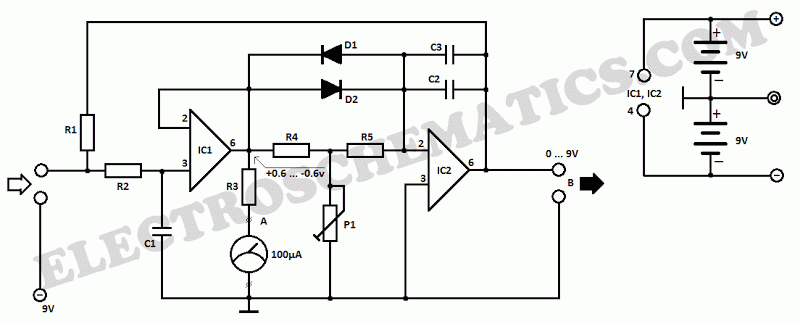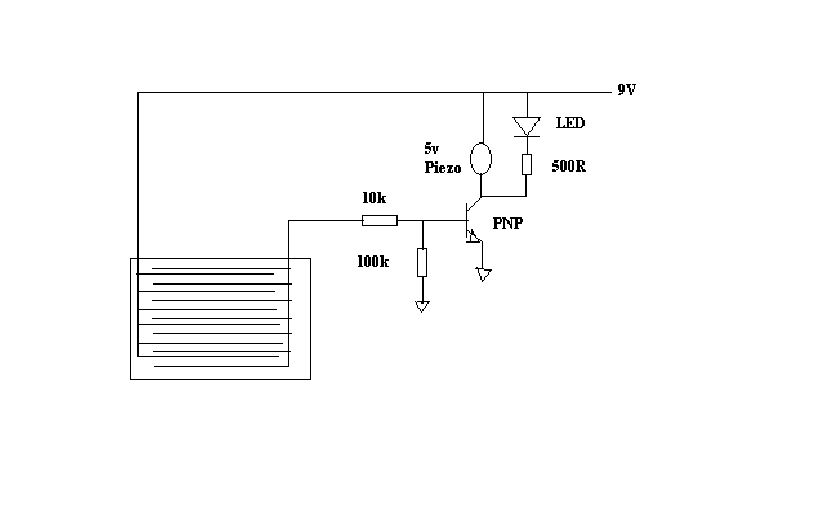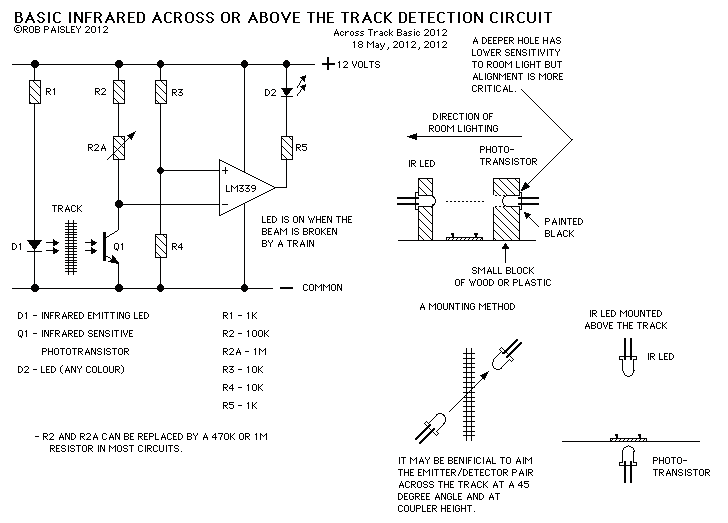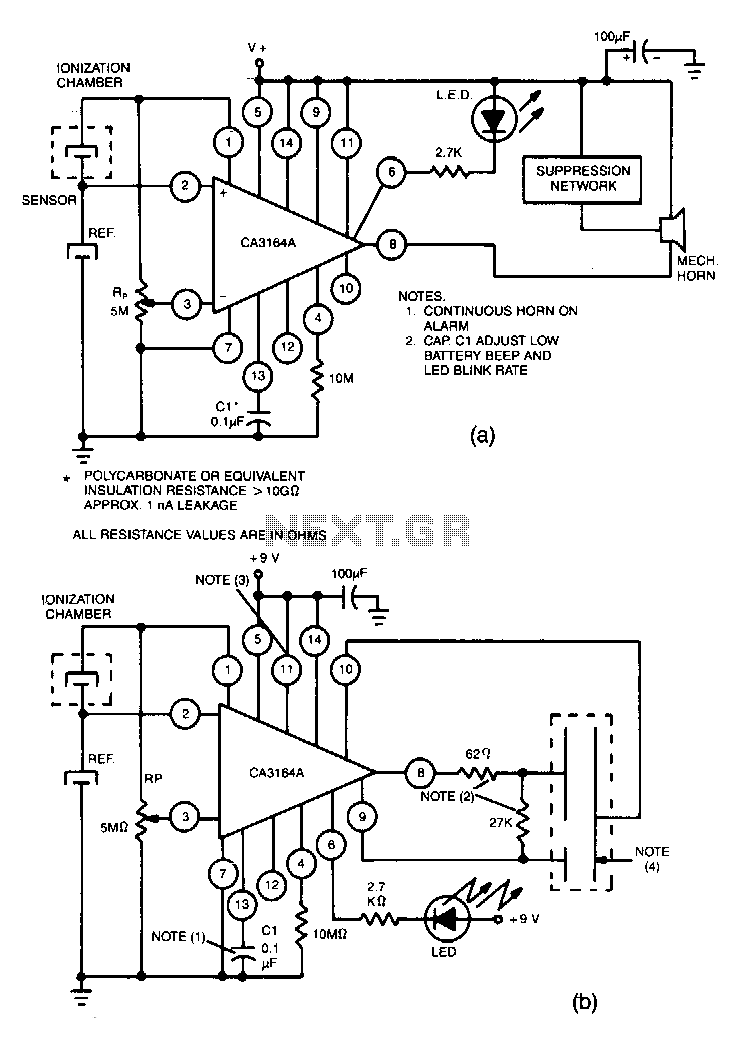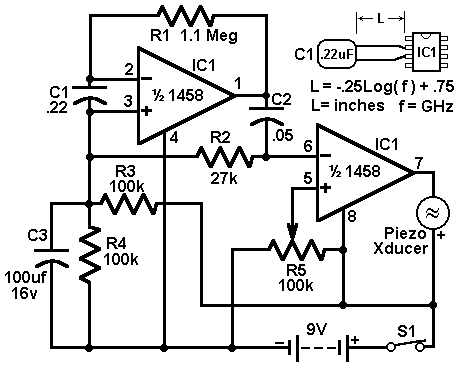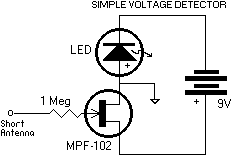
Line-Operated Smoke Detector
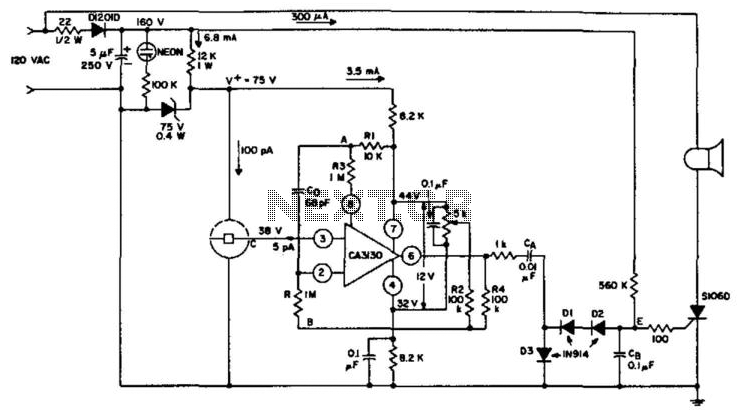
An ionization chamber in conjunction with a high-impedance CA3130 operational amplifier is utilized to detect the presence of smoke. When smoke is detected, the CA3130 ceases oscillation, which in turn triggers the S106D silicon-controlled rectifier (SCR) to sound an alarm.
The circuit employs an ionization chamber, which consists of two electrodes separated by a gas-filled space. When smoke particles enter the chamber, they disrupt the ionization process, leading to a decrease in ion current. This change in current is monitored by the CA3130 op-amp configured in an oscillator setup. The high-impedance nature of the CA3130 allows it to detect minute changes in the ion current caused by the presence of smoke.
In normal conditions, the CA3130 maintains a stable oscillation frequency. However, when smoke is detected, the ionization chamber's current drops, causing the CA3130 to stop oscillating. This cessation of oscillation serves as a signal that activates the S106D SCR. The SCR is a type of semiconductor device that can switch on and off based on the control signal it receives. Once triggered, the S106D SCR completes the circuit to the alarm system, which could be a sound-producing device such as a buzzer or siren, alerting occupants to the presence of smoke.
The overall design of this smoke detection system is efficient and reliable, leveraging the high sensitivity of the ionization chamber and the responsive characteristics of the CA3130 and S106D SCR. This configuration ensures timely detection of smoke, providing an essential safety feature in residential and commercial environments. Proper implementation of this circuit requires careful consideration of component values, power supply requirements, and alarm output specifications to ensure effective operation. Using an ionization chamber and a high-impedance (CA3130) op amp, the presence of smoke will cause the CA3130 to stop oscillating, triggering S106D SCR, sounding the alarm.
The circuit employs an ionization chamber, which consists of two electrodes separated by a gas-filled space. When smoke particles enter the chamber, they disrupt the ionization process, leading to a decrease in ion current. This change in current is monitored by the CA3130 op-amp configured in an oscillator setup. The high-impedance nature of the CA3130 allows it to detect minute changes in the ion current caused by the presence of smoke.
In normal conditions, the CA3130 maintains a stable oscillation frequency. However, when smoke is detected, the ionization chamber's current drops, causing the CA3130 to stop oscillating. This cessation of oscillation serves as a signal that activates the S106D SCR. The SCR is a type of semiconductor device that can switch on and off based on the control signal it receives. Once triggered, the S106D SCR completes the circuit to the alarm system, which could be a sound-producing device such as a buzzer or siren, alerting occupants to the presence of smoke.
The overall design of this smoke detection system is efficient and reliable, leveraging the high sensitivity of the ionization chamber and the responsive characteristics of the CA3130 and S106D SCR. This configuration ensures timely detection of smoke, providing an essential safety feature in residential and commercial environments. Proper implementation of this circuit requires careful consideration of component values, power supply requirements, and alarm output specifications to ensure effective operation. Using an ionization chamber and a high-impedance (CA3130) op amp, the presence of smoke will cause the CA3130 to stop oscillating, triggering S106D SCR, sounding the alarm.
